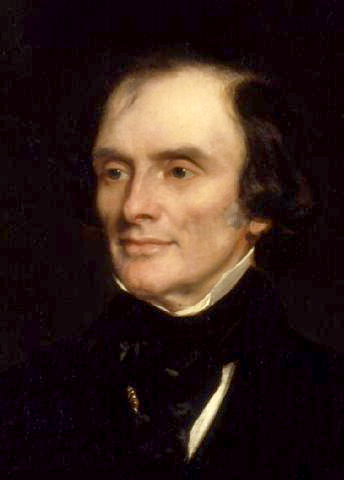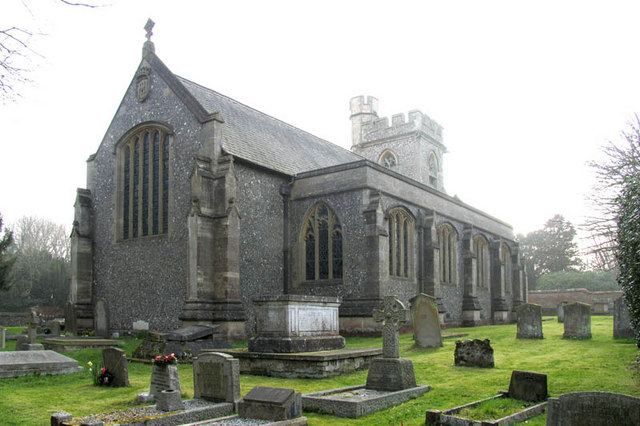by Susan Flantzer
© Unofficial Royalty 2018

From an albumen carte-de-visite, 1861; Credit – Wikipedia
John Russell, 1st Earl Russell, known as Lord John Russell before 1861, the courtesy title of a younger son of a duke, was Prime Minister of the United Kingdom twice during the reign of Queen Victoria (1846 – 1862 and 1865 – 1866). Born August 18, 1792, in the Mayfair section of London, he was the younger of the three sons of John Russell, 6th Duke of Bedford and his first wife The Honorable Georgiana Byng, daughter of George Byng, 4th Viscount Torrington. After the death of his first wife in 1801, the 6th Duke of Bedford married Lady Georgiana Gordon, daughter of Alexander Gordon, 4th Duke of Gordon.
Russell had two older brothers:
- Francis Russell, 7th Duke of Bedford (1788 – 1861), married The Honorable Anna Maria Stanhope, daughter of Charles Stanhope, 3rd Earl of Harrington, had one son William Russell, 8th Duke of Bedford
- Lord George Russell (1790 – 1846), married Elizabeth Anne Rawdon, had three sons including Francis Russell, 9th Duke of Bedford
Russell had ten half-siblings from his father’s second marriage to Lady Georgiana Gordon:
- Lady Georgiana Elizabeth Russell (died 1867), married Charles Romilly, had children
- Lord Henry Russell (died 1842), married Henrietta Maria Stopford
- Reverend Lord Wriothesley Russell, Canon of Windsor (1804 – 1886), married Elizabeth Russell, his second cousin once removed, had two sons and one daughter
- Admiral Lord Edward Russell (1805 – 1887), married Mary Ann Taylor and died without issue
- Lieutenant-Colonel Lord Charles James Fox Russell (10 February 1807 – 29 June 1894), married Isabella Davies, had two sons and three daughters
- Lord Francis Russell (1808 – 1869)
- Lady Louisa Jane Russell (1812 – 1905), married James Hamilton, 1st Duke of Abercorn, had 14 children, among their descendants are Princess Alice, Duchess of Gloucester; Diana, Princess of Wales; and Sarah, Duchess of York
- Lord Cosmo Russell (1817 – 1875)
- General Lord Alexander Russell (1821 – 1907), married Anne Holmes, daughter of Sir Leonard Worsley Holmes, 9th Baronet, had two sons
- Lady Rachel Evelyn Russell (1826 – 1898), married Lord James Butler, son of James Wandesford Butler, 1st Marquess of Ormonde, had two sons and two daughters
Russell had been born prematurely and was often ill during childhood. He started to attend Westminster School but his ill health caused him to withdraw. Thereafter, he was educated at home by tutors. From 1809 – 1812, Russell attended the University of Edinburgh.
In 1813, at the age of 21, Russell first entered the House of Commons as a Whig Member of Parliament for Tavistock. He had some help winning his first election. The 6th Duke of Bedford told the electors of Tavistock to vote for his son. Russell eventually acquired a prominent position in the Whig Party. When the Whigs came to power in 1835, Russell became Home Secretary (1835 – 1839). He also served in the Cabinet as Secretary of State for War and the Colonies (1839 – 1841), Lord President of the Council (1854 – 1855), Secretary of State for the Colonies (1855), and Foreign Secretary (1852 -1853 and 1859 – 1865). Russell was the Leader of the Opposition when the Conservative 14th Earl of Derby was Prime Minister (1852 and 1866 – 1868).
The Great Irish Potato Famine (1845 – 1852) had caused a disastrous fall in food supplies and so Conservative Prime Minister Sir Robert Peel decided to join with Whigs and Radicals to repeal the Corn Laws which imposed tariffs and other trade restrictions on imported food and grain. Peel’s Conservative Party failed to support the bill but it passed with Whig and Radical support and the Duke of Wellington persuaded the House of Lords to pass it. Following the repeal of the Corn Law, Peel resigned as Prime Minister on June 29, 1846, and Russell became Prime Minister.

Lord John Russell, 1853; Credit – Wikipedia
Russell’s solutions to the Potato Famine proved inadequate as the situation worsened. The Whigs believed that the market would provide the food needed and they refused to intervene against food exports to England. They stopped the previous government’s food and relief works, leaving many hundreds of thousands of people without any work, money, or food. Russell’s government introduced a new program of public works that by the end of December 1846 employed a half million Irish and was impossible to administer. During Russell’s first term as Prime Minister around one million Irish starved to death or died of diseases caused by malnutrition, and one million more were forced to immigrate, reducing the population of Ireland by 25%.
In the election of 1852, neither the Whigs nor the Conservatives had a majority. Queen Victoria asked the Conservative Edward Smith-Stanley, 14th Earl of Derby to form a government that lasted only six months. From 1852 – 1853 and from 1859 – 1865, Russell served as Foreign Secretary in the governments of George Hamilton-Gordon, 4th Earl of Aberdeen and Henry John Temple, 3rd Viscount Palmerston. In 1861, Russell was created a peer, the 1st Earl Russell, and sat in the House of Lords for the remainder of his career in Parliament. When Palmerston died on October 18, 1865, Russell once again became Prime Minister. In 1866, Russell’s second government made a failed attempt at further electoral reform and he resigned on June 26, 1866. Russell never held another leadership position but he was active in the House of Lords until a few years before his death.

Adelaide Lister, Russell’s first wife; Credit – Wikipedia
Russell married Adelaide Lister, widow of Thomas Lister, 2nd Baron Ribblesdale on April 11, 1835, but Adelaide died in childbirth delivering her daughter Victoria. The couple had two daughters:
- Lady Georgiana Adelaide Russell (1836 – 1922), married Archibald Peel, had seven children
- Lady Victoria Russell (1838 – 1880), married Henry Villiers, had ten children

Frances Anna Maria (‘Fanny’) (née Elliot), Countess Russell published by Mason & Co (Robert Hindry Mason), albumen carte-de-visite, early-mid 1860s, NPG Ax29968 © National Portrait Gallery, London
On July 20, 1841, Russell married Lady Frances Elliot-Murray-Kynynmound, daughter of Gilbert Elliot, 2nd Earl of Minto. They had four children:
- John Russell, Viscount Amberley (1842 – 1876), married The Honorable Katherine Stanley, daughter of Edward Stanley, 2nd Baron Stanley of Alderley, had three children
- The Honorable George Gilbert William Russell (1848 – 1933)
- The Honorable Francis Albert Rollo Russell (1849 – 1914), married (1) Alice Godfrey, had one son (2) Gertrude Joachim, had one son and one daughter
- Lady Mary Agatha Russell (1853 – 1933)
Russell and his second wife Frances took over the care of the surviving children of their eldest son John Russell, Viscount Amberley. In a similar situation to diphtheria going through the family of Queen Victoria’s daughter Princess Alice (scroll down to Death of Princess Alice) in 1878, Russell’s daughter-in-law Katherine nursed her elder son Frank and her daughter Rachel while they were ill with diphtheria. Katherine then became ill with diphtheria and died on June 28, 1874, and Rachel died five days later. Viscount Amberley died from bronchitis eighteen months later. The Viscount had unusual religious beliefs and did not want his children raised as Christians, so in his will, he had named two friends the guardians of his elder son Frank and his younger son Bertrand. However, Earl Russell and his wife successfully sued for custody of their grandchildren.
John Russell, 1st Earl Russell died May 28, 1878, aged 85, in Richmond Park, Surrey, England. He was buried in St. Michael’s Church in Chenies, Buckinghamshire, England in the Bedford Chapel, the private mausoleum of the Russell family and the Dukes of Bedford.
John Russell, 1st Earl Russell was succeeded by his grandson Frank Russell, 2nd Earl Russell (full name John Francis Stanley Russell). The 2nd Earl Russell had no children so he was succeeded by his younger brother Bertrand Russell as the 3rd Earl Russell. Bertrand Russell was a philosopher, mathematician, historian, writer, social critic, and political activist. In 1950, he was awarded the Nobel Prize in Literature “in recognition of his varied and significant writings in which he champions humanitarian ideals and freedom of thought.”

St. Michael’s Church in Chenies, Buckinghamshire, England, with the Bedford Chapel on the side; Credit – Wikipedia
This article is the intellectual property of Unofficial Royalty and is NOT TO BE COPIED, EDITED, OR POSTED IN ANY FORM ON ANOTHER WEBSITE under any circumstances. It is permissible to use a link that directs to Unofficial Royalty.
Works Cited
- Baird, Julia. Victoria The Queen. Random House, 2016.
- https://de.wikipedia.org/wiki/John_Russell,_1._Earl_Russell
- En.wikipedia.org. (2018). John Russell, 1st Earl Russell. [online] Available at: https://en.wikipedia.org/wiki/John_Russell,_1st_Earl_Russell [Accessed 21 Jul. 2018].
- Erickson, Carolly. Her Little Majesty: The Life of Queen Victoria.Simon and Schuster, 1997.
- Hubbard, Kate. Serving Victoria: Life In The Royal Household. Harper Collins Publishers, 2012
